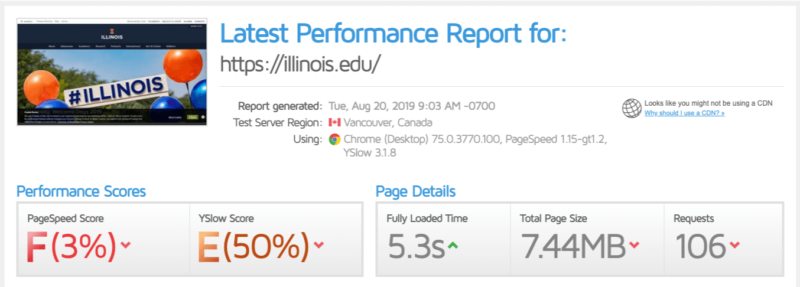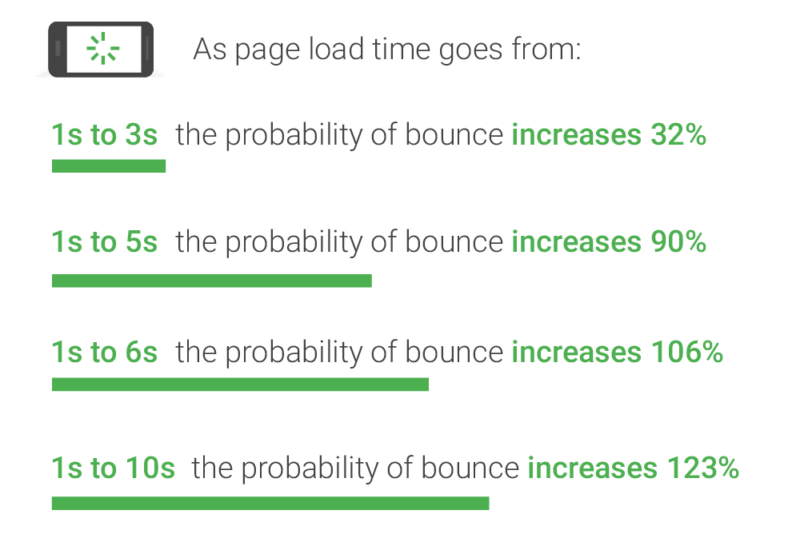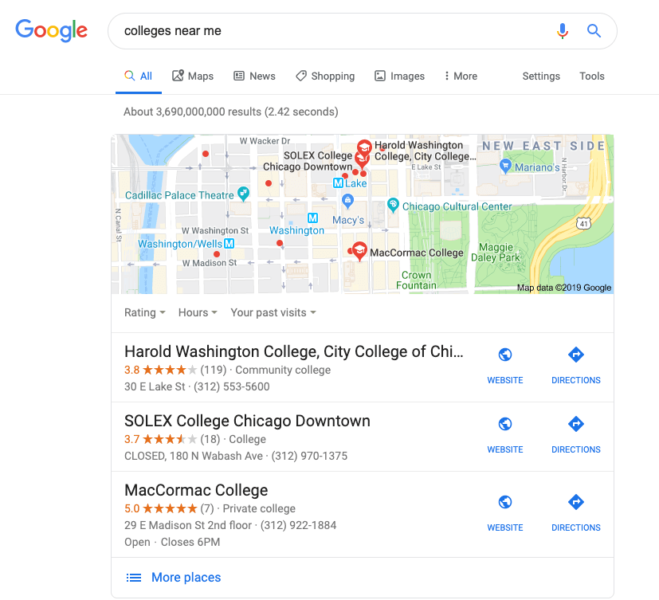The past five years have seen constant upheaval in Google’s search rankings formula. It’s difficult to keep up, and universities are often behind the curve when it comes to competition in search. Sixty-seven percent of internet users use search engines as their first source of information for higher education institutions.
With the exception of a few traditional schools like Pennsylvania State University and Gonzaga University, WordStream’s Ken Lyons says most schools are losing their online visibility to other websites.
“What I found to be completely bewildering is how the bulk of college websites are outranked by aggregate degree guides or list sites,” Lyons writes on the WordStream blog. “As such, they have to resort to paid search to get listed in the SERPs because they’re inept at SEO. Seriously, college websites (because of their .edu status) are branded, trusted, authoritative, powerful domains and should be able to outrank sites like other sites with ease. Yet even with this clear advantage, they still come up short.”
In fact, higher education is one of the highest-spending industries in PPC with an average cost per click (CPC) of $10. While PPC is a very effective tool for drawing in leads, it is typically most effective for bottom-of-funnel prospects.
Universities that eschew SEO best practices are turning away tens of thousands of free clicks each month, including queries from potential students who are much higher up in the funnel.
There are three major areas where universities can target their SEO efforts in order to obtain maximum benefit: taking control over brand information, using search and link data to drive strategy and understanding the new elements of search.
Controlling your brand information
The biggest issue in the new face of search is control over your own brand information. As Google has realigned its SERPs to better match the growth in voice search, featured snippets have become more important and more prominent than ever, and there is no guarantee that snippets about your university will come from your website.
Featured snippets
Starting in July of 2018, the People Also Ask (PAA) featured snippet went from appearing in about 15 percent of search results to more than 50 percent; PAA now appears in about 85 percent of SERPs.
These infinitely-expanding answer boxes appear above most organic results and are the new face of the SERP. Google is becoming a zero-click environment, where as many as half of searches are answered without leaving the search engine. It’s important for universities to learn how to show up in these featured snippets. Featured snippets also feed voice assistants like Google Home, adding another layer of importance.
Here’s an example from my search for “University of Iowa:”

The questions in the PAA are typically being answered by websites other than university. In Google’s eyes, these websites have better-answered questions than the university’s own website has. This is an issue for two reasons:
- This positions other websites as an authority, where they can potentially siphon traffic and links away from your site.
- It allows other websites to define your brand; to serve as an authority on your information. Universities should make all efforts to control their information.
To land in these featured snippets, schools need to create the best pieces of content possible; content that fully and plainly answers questions about the school and programs. Additionally, all pages should be marked up with FAQPage schema (more on schema later in this piece).
College search
Universities should make sure their data is showing up correctly in Google’s college search feature. With this feature, a search for a two- or four-year U.S. colleges delivers a featured snippet with information about admissions, cost, student life

This snippet is powered using public information from the U.S. Department of Education’s College Scorecard and Integrated Postsecondary Education Data System (IPEDS), a comprehensive data set available for four-year colleges. It’s important for all universities to examine their snippet and ensure that data is presented properly.
Links and keywords still matter
Search has evolved quite heavily in recent years. Despite all of these changes, some traditional SEO principles still hold true. It’s important to review data and use audience insights to produce content that ranks, engages and attracts links.
Keywords
Back in the dark ages of SEO, you needed a page targeting each search term. What’s more important now is writing about a topic and creating the best piece of content on the internet about that topic.
For universities, that means one

Links and redirects
Backlinks (links to your site from other websites) are still the bedrock of search rankings. Backlinks are the currency of
University websites typically have a lot of webpages that no longer exist. Every new semester and school year require new content, including class schedules, available courses and events. It may be a big mistake, however, to delete those outdated pages.
Before any page on your website is deleted, check to ensure that the page does not have any backlinks. Any pages that have backlinks should, at minimum, be redirected to another page using a 301 (permanent) redirect. Otherwise, the link equity of that page and any rankings boost it may offer are lost.
For events that recur every year, like an alumni weekend, consider updating the page with new information about the event rather than creating a new page for the event every year. Over time, the page will accumulate link juice which can be passed on to other important pages via internal linking.
One domain for everything
As much as possible, avoid using multiple domains for your university. It is tempting to start a new domain for the school’s athletics, for the employee site or for individual colleges.
This is a huge SEO mistake. When your college uses multiple domains, you are splitting up your links and authority among multiple domains. In essence, you create multiple weak sites instead of one strong site.




Work to create an internal policy at your university that discourages the creation of external domains and try to integrate external domains back into your main website.
The new basics
While those fundamental elements of search are still in play, new elements have periodically been added into the rankings mix. It’s important for your university to understand the evolving face of search and to make your website competitive.
Site speed and mobile-first indexing
Starting in July 2018 (after years of warnings), mobile site speed became a factor in Google’s ranking algorithm.
This is part of Google’s mobile-first indexing strategy, where the mobile version of a website is what is used to index and rank pages. Now, it’s more important than ever to make the mobile version of your website the best version of your website.

This is especially true for universities, where a large number of your prospective customers will be visiting your site on a mobile device. Also, consider that many potential students may be in areas that use 3G network service, which can further hamper load times.
Slow page load times not only limits the amount of your site that Google will crawl, but it also increases bounce rate and reduces site conversions.

The majority of university websites that I have tested showed extremely poor page load speeds. It’s incumbent upon schools to monitor page load time and address the issues that are slowing load times, including large images, excessive script and CSS, server issues and lack of compression.
For very important pages or paid search landing pages, universities may opt to implement AMP pages. This would provide a fast, stripped
Schema
Google has put increasing focus on the use of structured data (also known as schema) markups in creating featured snippets and search results.
In 2017, Google’s Gary Illyes went so far as to say, “We started building lots of new features that rely on structured data…That is an important hint for you that if you want your sites to appear in search features, implement structured data.”
He added, “Think about any schema.org schema that you could use on your pages. It will help us understand your pages better, and indirectly, it leads to better ranks in some sense, because we can rank easier.”
The amount of available schema markups has steadily grown. It is in the best interest of universities to pay attention, particularly to markups like CollegeOrUniversity and Course (for courses of study), and apply these and other relevant markups to their sites.
Local SEO
While universities may disregard the importance of local search, they do so at their own peril. 44 percent of users in local results clicked in the featured three pack.
There are millions of searches every month for thousands of terms like “colleges near me” (135K searches per month), plus thousands of searches for individual programs like “nursing program near me.” Local search can provide a lot of leads in your area who are looking for local education options.


Review local SEO ranking factors and make sure your university website is optimized to appear in the
Tough but necessary
Universities are typically behind the curve in SEO optimization, so the schools that optimize now will move ahead of the field in rankings.
Pay attention to:
- questions searchers have about your college and ensuring that they are thoroughly answered on your website to maintain control of your information
- key audience data like keywords and backlinks will help you manage content creation, exploit link equity and effectively add and remove pages from the site
- new SEO necessities like site speed, schema
and local SEO
SEO for universities is tough. University and college websites are often large, decentralized and unwieldy. However, paying attention to SEO and creating a centralized SEO strategy will pay huge dividends in non-branded organic traffic and leads.
Opinions expressed in this article are those of the guest author and not necessarily Search Engine Land. Staff authors are listed here.

